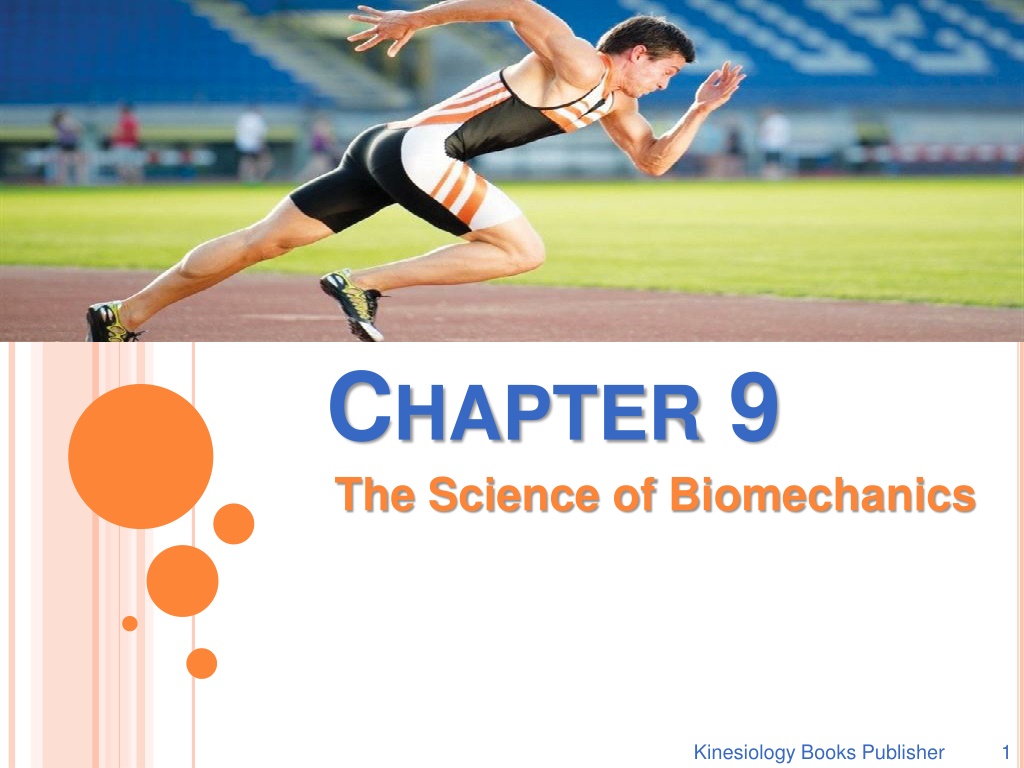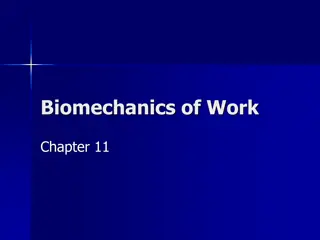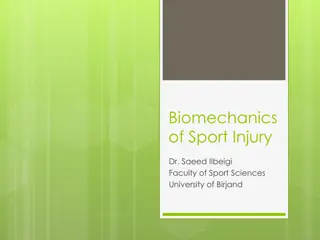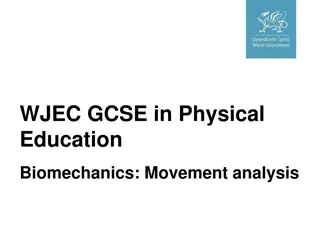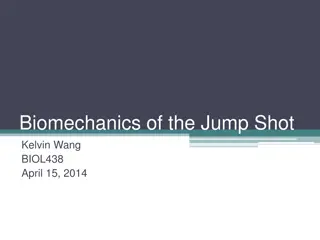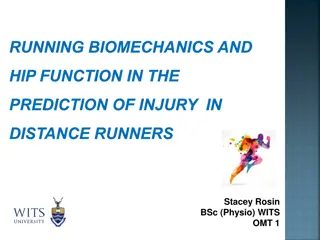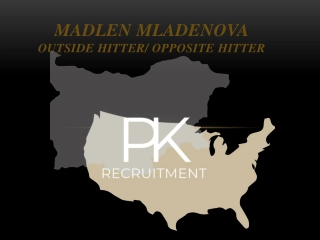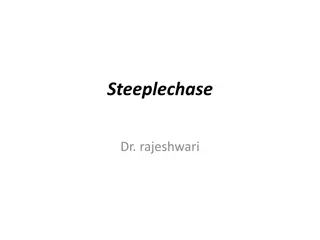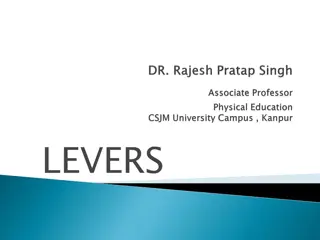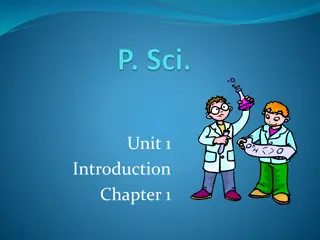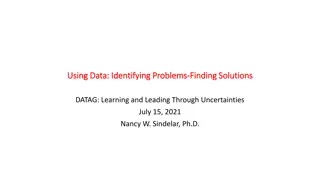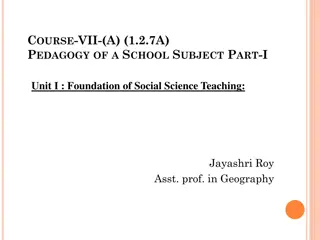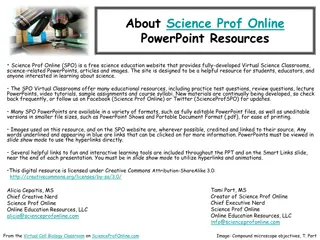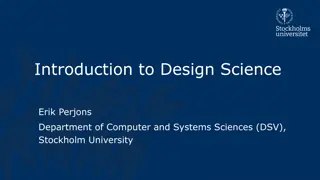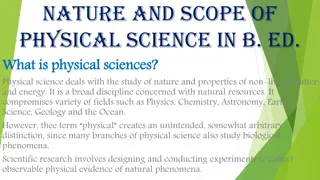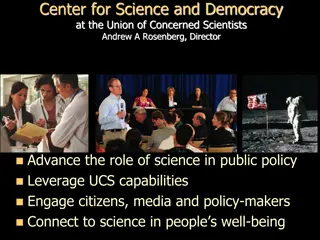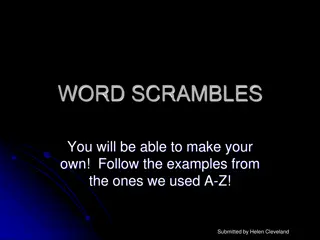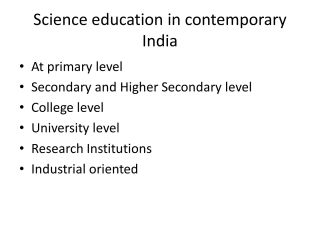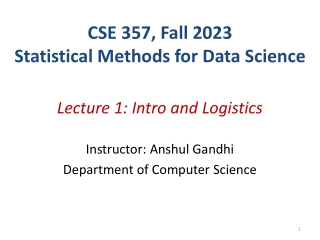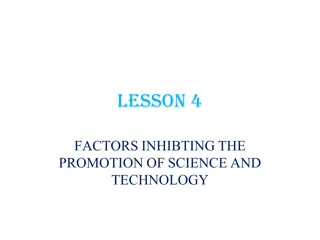Exploring the Science of Biomechanics in Kinesiology
Delve into the intricacies of biomechanics within the field of kinesiology, covering topics such as quantitative and qualitative analysis, kinematics versus kinetics, motion concepts including mass, gravity, and inertia, types of motion, and causes of motion.
Download Presentation

Please find below an Image/Link to download the presentation.
The content on the website is provided AS IS for your information and personal use only. It may not be sold, licensed, or shared on other websites without obtaining consent from the author. Download presentation by click this link. If you encounter any issues during the download, it is possible that the publisher has removed the file from their server.
E N D
Presentation Transcript
CHAPTER 9 The Science of Biomechanics Kinesiology Books Publisher 1
TABLEOF CONTENTS Types of Study Quantitative vs Qualitative Analysis Kinematics Versus Kinetics Motion Concepts Mass, Gravity, and Inertia Types of Motion Causes of Motion Lever Systems and Motion Mechanics Newton s Laws of Motion Law of Inertia Law of Acceleration Law of Action Reaction Fluid Dynamics Fluid Drag Forces: The Dynamics of Air Body Balance and Stability Control Equilibrium Balance Stability Qualitative Analysis of Human Motion Skill Objective Analyzing a Skill Observation of Performance Error Detection and Correction Kinesiology Books Publisher 2
THE SCIENCEOF BIOMECHANICS Study of internal and external forces acting on human body and their effects Relatively young Extremely diverse and multifaceted Contributes significantly to our knowledge of human movement Kinesiology Books Publisher 3
TYPESOF STUDY Quantitative versus Qualitative Analysis Kinematics Versus Kinetics Kinesiology Books Publisher 4
QUANTITATIVEVS. QUALITATIVE ANALYSIS Depends on Environment Availability of high-tech equipment Kinesiology Books Publisher 5
QUANTITATIVE ANALYSIS Using high-tech instrumentation Usually intended for researchers Measuring variables to optimize athletic performance Foot forces on sprinter s blog Muscle contraction sequence during running 3-D body segment movements during a high jump 6 Kinesiology Books Publisher 6
7 Kinesiology Books Publisher 7
QUALITATIVE ANALYSIS Using sight and hearing Usually done by coaches and teachers To identify and correct errors: Observe, analyze and correct. Requires framework and a set of principles 8 Kinesiology Books Publisher 8
KINEMATICVS. KINETICS Two ways to describe human motion 1. Without reference to forces causing motion 2. Describing motion in terms of forces that cause it Kinesiology Books Publisher 9
KINEMATICS Describing human motion without its forces Focusing on motion s spatial and timing characteristics Measurements: Time Displacement Velocity Acceleration 10 Kinesiology Books Publisher 10
KINETICS Describing forces leading to motion Internal forces Muscles pulling on bones Bone-on-bone, inside joints External forces acting on the body Without contact (e.g., gravity) From contact with ground, opponent or equipment 11 Kinesiology Books Publisher 11
MODELSOF HUMAN MOTION Understanding and observing human movements is complex All body tissues undergo shape deformation Most movements occur in three dimensions 3 models, simplify the study of human movements: Particle model Stick figure model Rigid body segment model 12 Kinesiology Books Publisher 12
Stick Figure Model Rigid Body Segment Model Particle Model Dot represents centre of mass Body segments = sticks Body segments = irregular 3-D volume Used when body or object is airborne and in flight Used when body in contact with other objects Used for sophisticated 3-D analyses i.e., projectile motion Describe gross motor skills in 2-D Includes shape deformation of body segments 13 Kinesiology Books Publisher 13
14 Kinesiology Books Publisher 14
MOTION CONCEPTS Mass, Gravity, and Inertia Types of Motion Causes of Motion Lever Systems and Motion Mechanics Kinesiology Books Publisher 15
MASS, GRAVITY, INERTIA Mass Amount of matter in an object Objects are reluctant to go change state of motion A measure of inertia Moment of Inertia Reluctance of rotating object to change state of motion Depends on mass and its distribution around axis of rotation Gravity Force of attraction between two bodies E.g., human body and planet earth Kinesiology Books Publisher 16
17 Kinesiology Books Publisher 17
18 Kinesiology Books Publisher 18
19 Kinesiology Books Publisher 19
TYPESOF MOTION Human movement composed of a number of fundamental types of motion: Linear motion / translation Angular motion / rotation General motion Kinesiology Books Publisher 20
All body parts move same distance and direction, at the same time Body / segments move linearly and rotate at the same time Translation: linear motion of the whole body Linear motion True for most athletic and every day activities General motion E.g., gymnastics floor routine, diver falling downward and at the same time rotating in a somersault Body moves on a circular path and rotates about axis of rotation Angular motion Body segments rotate about their joints E.g., twisting somersault 21 Kinesiology Books Publisher 21
CAUSESOF MOTION Application of internal or external forces Force is any action, push or pull, that tends to cause an object to change is state of motion by experiencing acceleration or as state of constant velocity Linear motion = force acting on centre of mass/ pivot point Angular motion = force not acting on centre of mass/ pivot point and result in torque (moment of force) Kinesiology Books Publisher 22
23 Kinesiology Books Publisher 23
LEVERSYSTEMSAND MOTION MECHANICS Lever system Mechanical device performing angular motion Components: Axis of rotation Fulcrum (pivot) Lever attached to fulcrum Human muscles, bones and joint work together as lever systems Kinesiology Books Publisher 24
25 Kinesiology Books Publisher 25
HOW DO LEVERS WORK Force is applied and if greater than resistance Rotation at the axis / fulcrum occurs To determine force amount, consider the length of force arm and resistance arm Kinesiology Books Publisher 26
HOW DO LEVERS WORK When lever rotate around and axis / fulcrum: Moment of force or torque is produced How much torque occurs? Therefore, with a longer force arm: Less force is needed Greater torque is produced 27 Kinesiology Books Publisher 27
No rotation: F=R, FA=RA Rotation: F>R, FA=RA How do you rotate teeter-totter in your direction? Rotation: F=R, FA>RA 28 Kinesiology Books Publisher Kinesiology Books Publisher 28 28
TYPESOF LEVERS Levers perform different functions Three basic types of lever exist First class Second class Third class Differ based on mechanics and how these components are positioned Axis Resistance Force 29 Kinesiology Books Publisher 29
FIRST CLASS LEVERS Applied force and resistance on opposite side of axis, at un/equal distance from one another Example: crowbar Human body: head flexion R Resistance A F A Force Kinesiology Books Publisher 30
SECOND CLASS LEVERS Applied force and resistance on same side of axis; resistance closer to axis Example: wheelbarrow Human body - hard to find: toe raise Resistance R F Force A A 31 Kinesiology Books Publisher 31
THIRD CLASS LEVERS Applied force and resistance on same side of axis; force closer to the axis Example: fishing Human body many: forearm flexion Resistance F R Force A A Kinesiology Books Publisher 32
33 Kinesiology Books Publisher 33
34 Kinesiology Books Publisher 34
NEWTONS LAWSOF MOTION Law of Inertia Law of Acceleration Law of Action Reaction Kinesiology Books Publisher 35
SIR ISAAC NEWTON 300 years ago Explained effect of forces acting on an object Through 3 laws Kinesiology Books Publisher 36
LAWOF INERTIA Newton s First Law Objects will not change their state of motion unless acted on by an unbalanced external force Kinesiology Books Publisher 37
LAWOF ACCELERATION Newton s Second Law Objects will experience a change in velocity or acceleration proportional to the unbalanced external force Kinesiology Books Publisher 38
Same mass Same force Same acceleration 39 Kinesiology Books Publisher 39
LAWOF ACTION-REACTION Newton s Third Law For every action there is an equal and opposite reaction; forces act in pairs that are equal in magnitude and opposite in direction Kinesiology Books Publisher 40
41 Kinesiology Books Publisher 41
FLUID DYNAMICS Fluid Drag Forces: The Dynamics of Air Kinesiology Books Publisher 42
FLUID DYNAMICS Knowledge of the forces generated by a fluid environment such as Water Air Water + Air All athletic event take place in a fluid environment Unaffected: gymnastics, dancing Affected: running, cycling, skiing, speed skating, swimming, badminton, baseball, etc. Kinesiology Books Publisher 43
DRAG FORCES: AIR Drag is a type of fluid force Profile drag; caused by object s size and shape Surface drag; cause by object s roughness Acts in opposite direction to body s travel and slows it down relative to body s Velocity Size and shape Roughness Fast-speed sports especially affected velocity = drag2 (10x faster, 100 x more drag) Kinesiology Books Publisher 45
SURFACE DRAG Body size and surface roughness = surface drag Boundary layer Thin layer of fluid adjacent to skin and carried along with body s motion, towing along outer fluid layers Laminar flow Small, streamlined, smooth, slow-moving bodies Smooth, layered flow pattern with no disturbance Turbulent flow Most human activities Disturbed flow pattern that changes flow conditions Kinesiology Books Publisher 46
Laminar flow Turbulent flow 47 Kinesiology Books Publisher 47
48 Kinesiology Books Publisher 48
PROFILE DRAG Main form of drag in fast-moving sports Characterized by turbulent flow Velocity of air flow past object is too fast for air to follow body s contour Backflow occurs at object s surface causing large, turbulent low- pressure zone behind the body This zone is continually formed and increases object s work Profile drag-reducing strategies frontal surface area (e.g., lugers are supine) sources of turbulence (e.g., speed skaters with arms behind back) Drafting Kinesiology Books Publisher 49
MAGNUS EFFECT A rotating body carries a boundary layer that interacts with surrounding air Boundary layer flow opposite to relative airflow Air is slowed by friction Zone of increased pressure created Boundary layer flow same as relative airflow Air is not slowed down Zone of increased pressure created Net difference in pressure on opposite sides of rotating object = Magnus force Magnus effect is mostly found in ping pong, tennis, soccer, and baseball 50 Kinesiology Books Publisher 50
